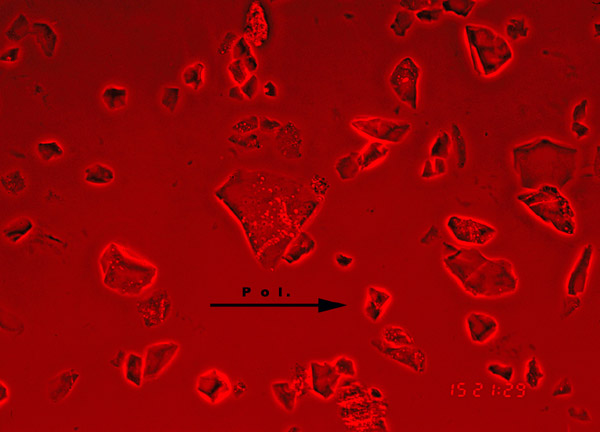Phase contrast spectral view
|
|
 |
 |
 |
Phase contrast images of quartz in a liquid with n=1.544.
The crystal at the center of the picture has its small index (ordinary) parallel to the direction of the polarizer. No analyzer is inserted. The top left image is a polychromatic light view. The crystals with index matching the one of the liquid appear blue with a red phase contrast halo. Quartz crystals with other orientation have in fact a higher refraction index and appear thus with a halo of different orange hues. The three other images illustrate the influence of the wavelength change on the appearance of the crystal in monochromatic light. The index of the central crystal matches the one of the liquid for the yellow light. In the monochromatic yellow light, the central crystal nearly vanishes. Crystals with other orientations have no matching index and are thus visible with a bright halo. They will also disappears in a light of lower wavelength. In green light, the liquid has a higher index than the central crystal which appears thus with a dark halo. The opposite is true in red light: in this case the crystal displays a bright halo. The rapid change of the wavelength of the monochromator allows quickly to find the wavelength of the match: the halo of the target crystal changes from bright to dark and disappears at the wavelength of the match. The fine tuning of the monochromator can be very sharp.
 |
 |
In the two pictures above, the stage of the microscope has been rotated by an angle of 90° so that the high index of the central crystal is now parallel to the direction of the polarizer. The halo is now bright orange indicating that the indices of crystal and liquid do not match anymore for the D line of sodium. With the monochromator inserted, we can see that the wavelength must be decreased to the green to obtain the disappearance of the halo. From this wavelength, the index can be calculated.
